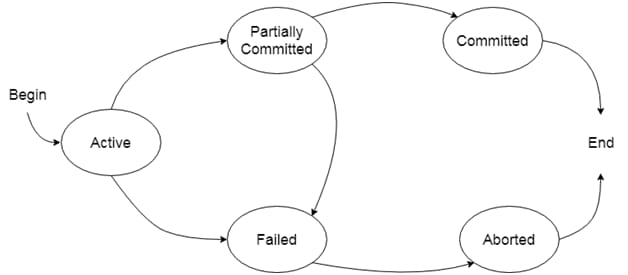In the previous article we’ve learnt about some transaction concurrency. What is transaction ?. Also about some of its properties. In this article then we’ll learn about some more properties related to TRANSACTION CONCURRENCY . Transaction concurrency and its properties is set of tasks . It is an action or series of action. It is perform by single user. These help us to access the contents of database. So, let’s study more about its properties.
ISOLATION PROPERTY OF TRANSACTION CONCURRENCY:
It shows that data which is use at time of execution of transaction cannot be use by second transaction. After the first transaction complete only then the second one is progress out. The concurrency control system enforce this property.
DURABILITY:
The durability property is use to indicate the performance . Performance of the database’s consistent state . It states that transaction makes permanent changes. Also they cannot be dismiss by erroneous operations . For example, due to faulty transaction ,or by system failure. After the completion of transaction . Further, the database reached in state called Consistent state. That cannot be dismiss even in the case of system failure. The responsibility of it is of recovery subsystem.
In database , the transaction can be in any one of the following states:
- Active state
- Partially committed
- Committed
- Failed state
- Aborted
ACTIVE STATE:
The active state is the first state. All the transaction begins from here. In this state, transaction starts executing. Insertion, deletion , updating etc. As a result in record is carried here . But all records are still not save in database.
PARTIALLY COMMITTED:
In this state, transaction executes its final operation. But the data is still not save to the database. So, this state is call as partially committed . Subsequently the transaction is completed partially.
COMMITTED:
A transaction is in committed state if it executes all operations. Successfully. In this state all effects are save . Not temporary but permanently. It is save on the database system.
FAILED STATE:
If any of the checks . Checks made by recovery system fails. Then transaction is in failed state. Because transaction fails due to some reasons and it is not saved in database. It may be because of system failure or any errors.
ABORTED:
If any checks fail . And transaction has reached a failed state . Then the database recovery system will make sure that database is in its previous consistent state. If not then it will be abort or rollback condition. Because it should bring the database into consistent state. After aborting transaction database recovery module will select one of the two operations:
- Restart the transaction.
- Kill the transaction.





